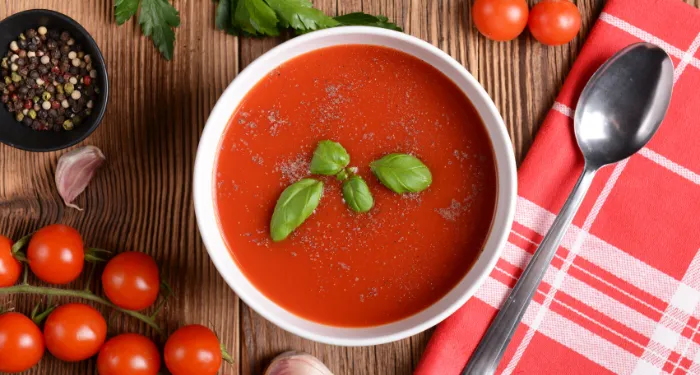
Cookbook Showdown: The Best Tomato Soup Recipes, Tested
Here we go, another month of Cookbook Showdown, the high-octane, 50 thrills a minute cook off in which we compare recipes for the same dish from four different cookbooks. This month I’m in full tomato mode, testing out the best tomato soups. Let’s do this!
What Makes a Soup with Tomatoes a Tomato Soup?
In searching for cookbooks to use, I quickly realized that I was going to have to make some decisions in clarifying what I mean when I say “tomato soup.” Is it enough that a soup has tomatoes for it to be called a tomato soup? Surely not, as I wouldn’t call your average beef stew “tomato soup” even though it’s generally got tomatoes in it.
What about cold soups? Could your gazpachos and such be considered tomato soups? Surely yes, as they are tomato-based soups that rely heavily on the flavor of tomatoes. But I elected to stick with hot soups.
My goal in cookbook showdown is to choose four recipes that are attempting to get similar results. If I’d chosen three hot soups and one cold soup, that cold soup would have had to go up against other soups that are trying to do what that gazpacho is not trying to do. Would it be fair to compare a cup of fat-free greek yogurt with full-fat, frozen yogurt? No, though their base ingredients are the same, the goal is not.
So for this reason, I kept your quintessential Campbell’s Tomato Soup in mind. Smooth, creamy, flavorful, and perfect with a grilled cheese. Though, thankfully, none of these had eight grams of added sugar like your friends Campbells.
What Makes a Good Tomato Soup?
Depending on just how deep you’ve waded into the tomato soup fandom, you may or may not be surprised to learn that people have very strong opinions on what makes for a good tomato soup.
Does the perfect tomato soup have a chicken stock or cream base? Should it have olive oil, butter, or both? Canned or fresh tomatoes? Should it be passed through a fine mesh strainer until it’s silky smooth or do we want a more full-bodied option? What’s the best tomato soup accoutrement — grilled cheese or croutons?
Two of those questions have easy answers and I’ll answer them right now, no problem. First, obviously tomato soup is best friends with grilled cheese, get your croutons out of here. And as to the fresh versus canned argument, it depends: what’s the date? If it’s tomato-time and you can get fresh, perfectly ripe tomatoes, then yes, use fresh tomatoes. On the other 300+ days out of the year, use a high-quality canned whole tomato that was picked at its most delicious ripeness.
For the purposes of this tomato soup boil off, I made two recipes that had fresh tomatoes and two that had canned. Some had cream, others used broth. But more on all that below.
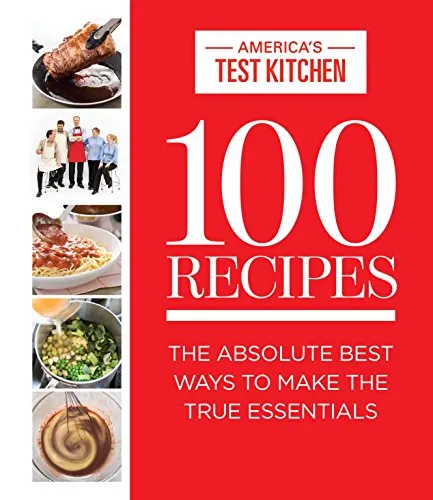
100 Recipes: The Absolute Best Ways to Make the True Essentials
This cookbook from America’s Test Kitchen is boss. Much more than just giving you recipes, they explain the many other options they tested and discuss why they didn’t work. This often involves them telling the reader, “Yes, yes, we know everyone does it this way but we’re here to tell you to do it that way!” and however skeptical I am, they are generally right.
Their tomato soup recipe is called Creamless Creamy Tomato Soup and it was both — creamless and also very creamy in texture. In the pages before the actual recipe, they explained why this recipe uses canned tomatoes, why they thicken with bread, why they chose oil and not butter, and why they chose onions to sweeten it instead of the sugar/brown sugar many tomato soup recipes use.
They also make a case against cream. According to their testers, milk solids (found in both cream and in the butter they don’t use) dull the flavor of tomatoes. They want that full bodied tomato gusto and so use chicken broth instead.
This soup was good. In fact, it was my second favorite soup. It did have a creamy mouth feel but I don’t know that the bread was up for the challenge of thickening it. Compared to the number one stunner of this showdown, this soup was not as thick as I would have liked.
Ranking: Silver medal
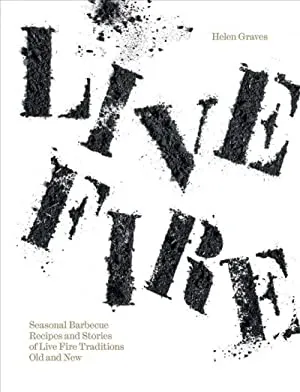
Live Fire: Seasonal Barbecue Recipes and Stories of Live Fire Traditions Old and New by Helen Graves
As the name implies, this is a cookbook full of recipes that involve fire. The tomato soup recipe is pretty straightforward: you roast tomatoes, onions, and garlic over a wood-burning grill and then you make tomato soup out of them.
This recipe called for fresh tomatoes. It used cream and the sweetener was caster sugar.
Sounds delicious, no? It’s true that this was tasty, but it’s also true that the tomatoes alone took almost two hours to roast. For a recipe to take as long as this, and to require purchasing an oak log, I need it to be significantly better than your average 20-minute soup. While the roasty toasty was nice, in my opinion it was not worth the work involved.
Ranking: Honorable mention
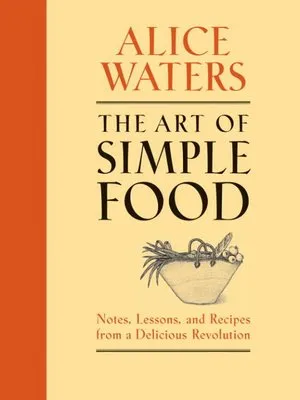
The Art of Simple Food by Alice Waters
This cookbook is often used in Cookbook Showdown, and for good reason: it’s delightful and makes delicious eats.
Waters suggests saving this recipe for “the height of summer, when tomatoes are abundant and perfectly ripe.” She’s not shy about using both butter and oil, and her special veggie ingredient is a leek.
This recipe does not use any added sweeteners, uses only water as a base, and counts on white rice as the thickener. It also requires passing the soup through a medium strainer.
By far, this was the number one stunner, no question. The tomato taste was out of this world intense, the rice understood the thickening assignment, and the natural sweetness of the leek and onion worked perfectly.
Ranking: Gold medal
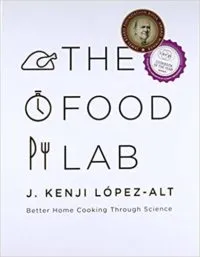
The Food Lab: Better Home Cooking Through Science by J. Kenji López-Alt
Another common cookbook in this series, López-Alt does just what the subtitle suggests: he uses science to find the perfect methods for making your favorite dishes. He’s also very funny.
His recipe is called 15-Minute Pantry Tomato Soup and it truly didn’t take much longer than 15 minutes. It also mostly contained items I generally have on hand, though I did follow his NOTE at the top of the recipe and bought some “high-quality canned tomatoes such as Muir Glen,” instead of using the generic whatever-quality canned tomatoes I had on hand.
The thickener used was a tablespoon of floor, and unfortunately, it was just not up for the challenge. This was the runniest soup and that’s a big part of why it placed in third place. The recipe called for butter over olive oil and used whole milk or heavy cream (I used heavy cream).
Ranking: Bronze medal
While I do have to choose winners, and there was a clear winner here, the truth is that all of these recipes were great and would be good in different situations.
Is it the dead of winter and all the “fresh” tomatoes you can find are mealy-mushy? I suggest the tomato soup from 100 Recipes, unless you don’t want to leave the house and you need to eat stat, in which case I’d recommend The Food Lab. But when it’s full-on tomato-mode time, you will not regret following in Alice Waters’ footsteps.
Looking for more Cookbook Showdowns? Check out:
The Best Grilled Cheese Recipes, Tested (a perfect accompaniment!)
The Best Lemon Meringue Pie Recipes, Tested
The Best Cornbread Recipes, Tested









